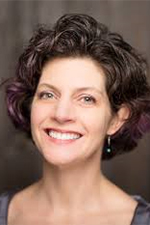President's Corner — Volume 47 #3

Artificial Intelligence (AI) has become a big part of our culture very quickly. And what does AI know? Only what it's been trained to know. The information that it was given forms the basis for the decisions it will make — like what search results you see in Google, or what data it pulls to answer a question. What does that have to do with playing the double bass? Well, we are each a product of the information we take in and the choices we make using that information. If I asked you to describe "a typical bass player," chances are that you will describe a man, perhaps a tall man, an adult, probably in some wardrobe like a shirt and pants, and likely standing to play the instrument. In fact, when I was researching historic double bass methods, all the teaching images were of adult men until I reached the late 20th century, when Ludwig Streicher's method had a female player on the cover of the updated edition. Jeff Bradetich took this so much farther in his book, showing images of players of all heights and a variety of sitting and standing postures. Modern teaching methods for young bassists now routinely feature children of different genders both standing and sitting.
How then can we train our community hive-mind on what the 21st-century bassist looks like, sounds like, acts like? Intentionally choosing what resources to focus on and giving ourselves a wide variety of information. It can start with simply watching The Only Girl in the Orchestra (Oscar-winning documentary), or choosing to share videos with your students from artists like Lauren Pierce or Kebra-Seyoun Charles. Perform music by Black composers and female composers, and there are resources like the Institute for Composer Diversity that are ready to help you find music to fit the bill. If you are in the position to choose visiting artists for your festival, workshop, or masterclass, use that opportunity to introduce people who don't look like you.
Ok, let's play a game! What do these people have in common? Diana Gannett, Orin O'Brien, Kristin Korb, Caroline Emery, Chi-chi Nwanoku, Phoebe Russell, Corky Davis, Jane Little, Caitlyn Kamminga, Endea Owens, Kate Nettleman, Linda McKnight, Deborah Dunham, Kristin Bruya, Patricia Weitzel, Sonia Ray, Wesley Thompson, Lorraine Campet, Sue Yelanjian, Marion Hayden, Renata Cáceres, Katie Ernst, Ella Sharpe, Cielito de Jesus, Sara Neilson, Jacqui Danilow, Cathy Elliott, Jackie Pickett, Nina DeCesare, Susan Hagen, Lindsay Lam, Kim Plewniak, Hollie Greenwood, Kate Jones, Tiffany Freeman, Chris Kosky, Nicholas Greer-Young, Natali Linares, Imer Acuña, Sarah Wager, Maggie Urquhart, Christine Hoock, Rachel Martin, Mikyung Sung, Tracy Rowell, Nina Bernat, Gisel Dominguez, Maggie Cox, Connie Martin, Barbara Tellier, Linda Oh, Gail Cruvand, Heather Miller Lardin, Vivian VanWinkle-Bright, Yung-chiao Wei, Jessica Valls, Christine Craddock, Ju-Fang Liu, Louisa Womack, Chelsea Strayer, Wendy Kane Barone, Uxía Martínez Botana, Allegra Hale Nieto, and Gary Karr?
All bassists, of course, and all firsts in one way or another. But not the last. As I prepare to pass the torch, or in our case the beautifully spangled tailpiece, to the next president of the ISB, it has been my honor to lift up many voices in our community so that we may all see and hear one another.
 Gaelen McCormick
Gaelen McCormick2023-2025 President, ISB
Read this issue of Bass World, Volume 47 #3 (Members Only).
